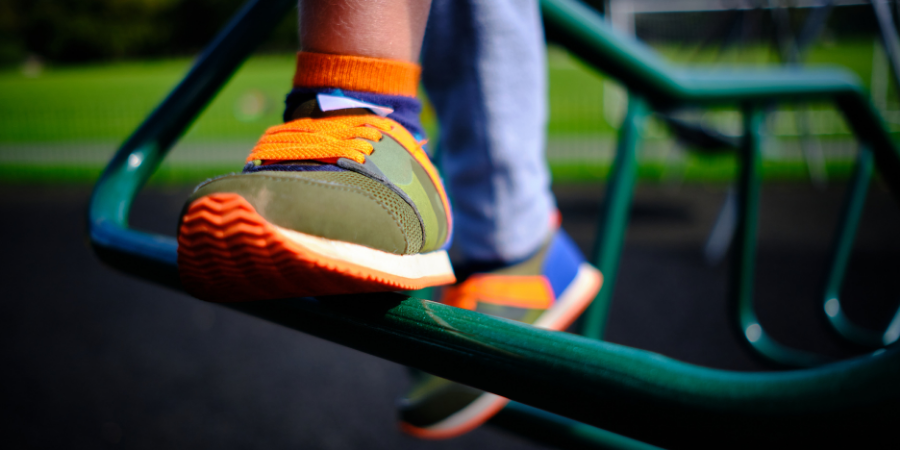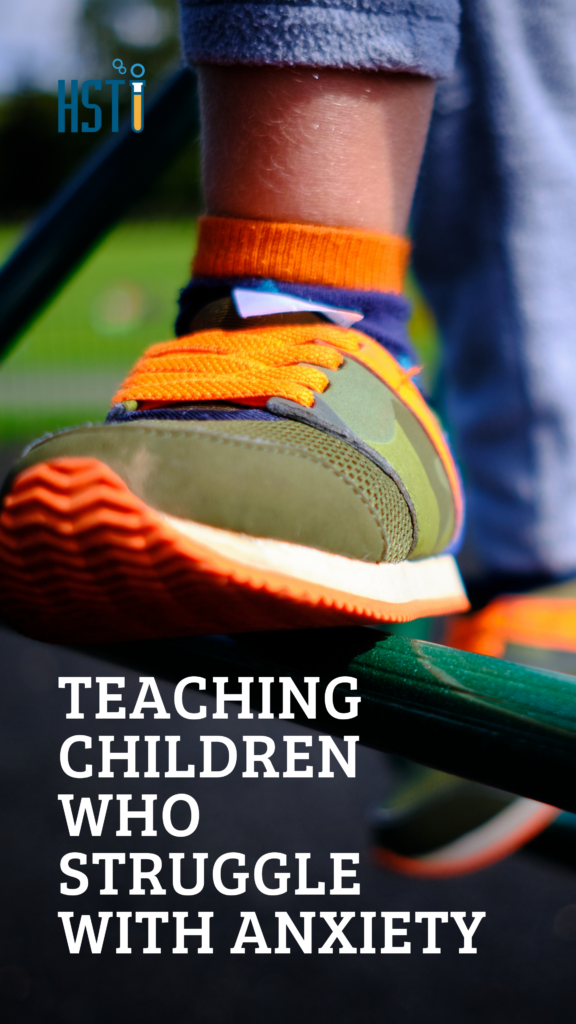Anxiety is defined as a feeling of worry, unease, or nervousness, which is commonly associated with an event or task with an uncertain outcome. Often students who struggle with anxiety are not able to label what they are feeling as anxiety but instead will commonly state that their stomach hurts, or will list other physical symptoms. Daily life with these students isn’t easy at times.

While not all anxiety is extreme or long-lasting, some anxiety disorders you may come across include generalized anxiety disorder, OCD (Obsessive Compulsive Disorder), panic disorder (including panic attacks), PTSD (Post-traumatic stress disorder), social anxiety disorder, separation anxiety disorder, specific phobias, and are also included within varying types of mental illness. If your student has a diagnosed anxiety disorder, you may have a plan in place for how to work with your student, but often there are times when there is no plan in place, or the plan is not working effectively. Because of that, here are some options you can utilize to assist your student in overcoming their anxiety.
In case you have a loved one that you suspect struggles with anxiety but hasn’t been diagnosed yet, let me give you some health issues to watch for.
- Physical symptoms like fatigue, stomach ache, headaches, muscle tension
- Can experience periods of time with a high heart rate or shortness of breath
- Can have trouble sleeping
- Can go through trouble in separation from parents
- Irritability
- Restlessness
- Trouble concentrating
- Awkwardness or shyness in social situations
All of these are signs that you may need to have your child evaluated through professional help. There are anti-anxiety medications that can help in some cases and there are also therapies like cognitive behavioral therapy that have had good results. The point is, there are various treatment options that will allow you to get help for your child.
Schedule for Students Who Struggle With Anxiety
At the beginning of the Teacher Guide of most curriculum, there is a suggested schedule. Although you are not required to use that schedule and have likely created your own, a schedule can assist your student’s that struggle with anxiety in knowing what is coming just like it provides you a plan for the day, week, month, or school year. Knowing what is coming can help lessen your student’s symptoms of anxiety.
When beginning a new day, you can provide your student with a plan (or schedule) of what the day will entail. This can be generalized to a list of subjects that will be included in their learning for the day, or it can include specific reading or experiment sections during your science lesson. You know your family member best, so the type of schedule you provide will be determined by the needs of their health conditions.
Some students can become more anxious about experiments than reading sections because there is an unknown about what will occur in an experiment. While this unknown is part of the wonder in science for many students, you can offer your student the opportunity to discuss the experiment with you prior to starting so they know what to expect.
Routine for Students With Anxiety
Many students that struggle with anxiety, or other mental disorders, thrive on routines because they know what is coming. By not feeling blindsided by what is coming next, you may notice your student relaxing when beginning a new subject for that day as it was a part of their routine (or an expectation they had of the day).
Some students need strict routines that include a designated and consistent amount of time for each subject in their learning. However, it is common for sections in the Student Workbook to take different amounts of time. If your student needs timing consistency in their routine, you can combine sections or stop in the middle of a reading section. Often, there are extra coloring pages or puzzles at the back of both the Student Workbook and Teacher Guide. These pages can also be used to fill time at the end of a lesson for your student.
Having Clear Guidelines
When moving into an experiment or new section of their Student Workbook, your student may not be aware of the expectations associated with that section. It can be important to set clear guidelines for what you expect of your student during that section AND what your student can expect from that section as they go through it. As you set up expectations for everyday situations for your student, it is important to allow them to ask questions so they can get a clear picture of what is to come each day.
If you begin a section and find that you did not fully prepare them for what they would experience or what is required of them, it is important to realize that they may need to stop the activity so you can provide them information for the new guidelines that are in place. If needed, allow your student to process the new information before continuing through the section to reduce feelings of anxiety.
Priming for Students Who Struggle With Anxiety
Priming is when you prepare your student that struggles with anxiety for a situation or task by giving them the necessary information prior to the beginning of that task, and can best assist with transitions to a non-preferred subject or away from a preferred subject. Often science is a preferred subject because it is hands-on and engaging. Regardless, when working with a student with anxiety, priming your student can help them transition more easily.
For younger students, you can use a “First, Then” chart with icons for each subject or activity that will be completed. When doing so the “First” subject is what you are already working on and the “Then” subject is what you will be transitioning into once the “First” subject has been completed. This provides your student a visual for what is to come.
For older students or students who can tell time, you can prime your student by telling them how much longer they have until they will be moving onto a new subject. These time increments you choose will be based on your student’s age and how much time they need to transition. However, most commonly you do not begin to verbally prime more than 15 minutes prior to a transition. If you would like, you can use this script:
Teacher: You have 15 minutes left to complete your math.
Teacher: We are finishing math in 10 minutes.
Teacher: In 5 minutes, we are moving on to science.
Teacher: Let’s put our math away so we can move on to science.
Teacher: Great job putting your math away so we can start science.
Praising your student when they transition well is important. This encourages them to perform the behavior again (transitioning on time) and to stay positive when doing so.
Relaxation Exercises for Students Who Struggle with Anxiety
You may or may not already be doing all of the suggested techniques discussed for your child’s well-being. If other coping strategies aren’t working for your student, you may need to provide them the opportunity to relax their bodies. Research relaxation exercises to find the one(s) that will work best for your student. Some students want to use a fidget tool to help calm their bodies, while others want to move to a dark, quiet space. Yoga or mindfulness exercises may also work for your student. Regardless of what type of relaxation exercise your student completes, make sure that it calms their body and mind so they can return to or begin a new activity with minimal stress.
Although all of these tools have been set up with your student in mind, don’t forget that teachers can get anxiety too. Not every teacher loves teaching science, which is why we have tried to make it as easy and enjoyable as possible. However, if you feel anxiety at any time, you can use these tools for yourself as you teach any subject, or during your day-to-day activities. It might also be helpful to find a local support group or mental health professional to help provide you or your student with more tools to lessen symptoms of anxiety, which can be helpful in school settings and life events.






